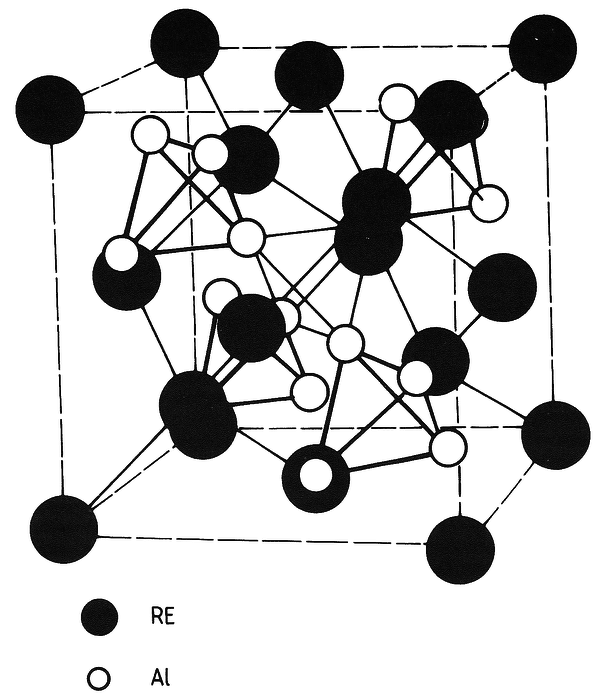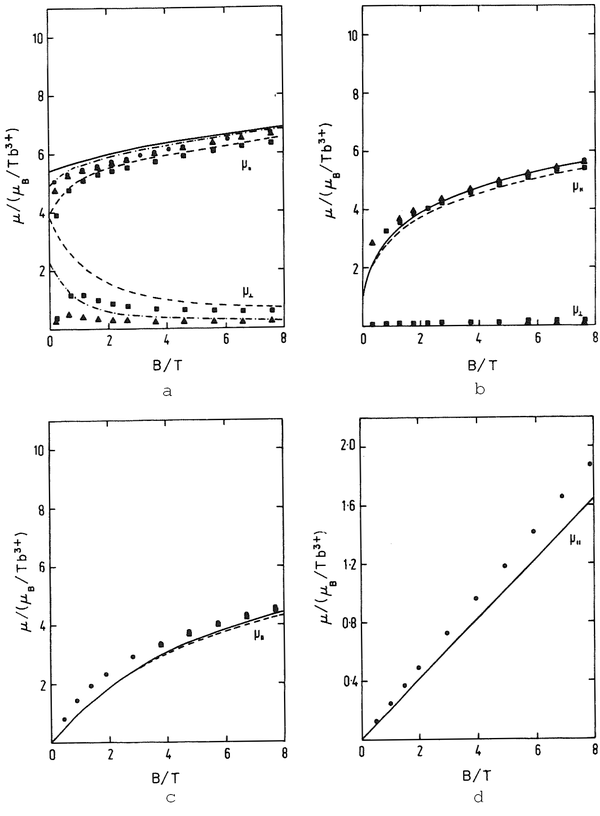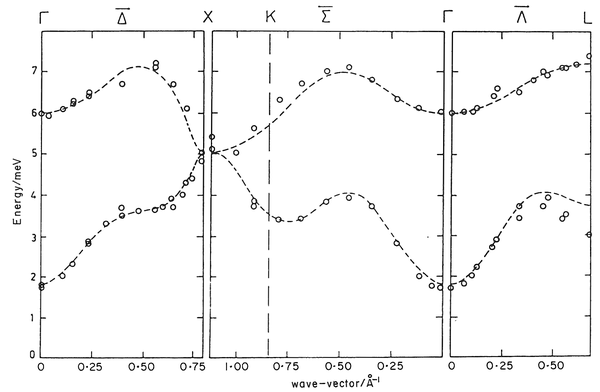Institute of Applied Physics
Nonlinear Systems and Patternformation - Magnetism - Material Science - Applied Physics

Institute of Applied PhysicsNonlinear Systems and Patternformation - Magnetism - Material Science - Applied Physics |
 |
2. MagnetismSee also Research This field of research is concerned with the magnetic properties of rare earth ions in solids. In total there are 17 rare earth (RE) elements: Scandium (Sc), Yttrium (Y), Lanthanum (La), Cerium (Ce), Praseodymium (Pr), Neodymium (Nd), Promethium (Pm), Samarium (Sm), Europium (Eu) , Gadolinium (Gd), Terbium(Tb) , Dysprosium (Dy), Holmium(Ho), Erbium (Er), Thulium(Th) , Ytterbium (Yb) and Lutecium (Lu). The magnetic properties of many of these elements and their compound are of considerable scientific and technical interest. It is assumed that in solids, magnetic spectroscopic and related properties of REs are relatively easy to describe. This has to do with the fact, that for most of them the 4f electrons dominate the magnetic behaviour that in turn are shielded effectively by outer electrons of the ion. Under these conditions, the residual interaction due to the crystalline electric field (CEF) plays an important role. Therefor it is highly desirable to test related quantum mechanical approaches in a systematic manner in order to improve the theoretical understanding of the overall magnetic properties of solids containing RE elements. At first glance pure solid REs are ideal candidates for desired systematic investigation, also because single crystals where available since 1950 (Behrendt et al. 1950). However, important candidates of the pure RE solids have different crystallographic and magnetic structure and in general 4 parameters are needed for an appropriate description of the CEF acting on the RE ions. This makes a systematic investigation throughout the RE series of elements difficult. In contrast to pure RE metals, all REAl2 intermetallic compounds crystallize in the MgCu2 structure (space group Fd3m) where the RE ions possess cubic point symmetry. This goes along with 2 CEF parameters. In addition, the melting points do not vary much along the series which is a hint for that their chemical properties are similar. Also all compounds of interest order ferromagnetically. Last not least, single crystals became available since 1970, due to the work described under the topic Material Science [4,9]. A further plus point is the circumstance, that the nearest neighbours of the magnetically active ions are magnetically neutral are Al3+ ions which do not change on replacement of one kind of RE atom by another. - In summary, the physical properties of ReAl2 intermetallic compound present an excellent basis for a systematic investigation of the magnetic behaviour of RE ions in solids. Unfortunately, not all REAl2 compounds are suitable for the envisaged investigations. Sufficient large crystal field effect cannot be expected in compounds with empty or completely filled 4f shells. This is the case for Sc, Y, La, Gd and Lu. Therefore these elements are of secondary interest. Also, it is well known that for Ce, Sm, Eu, Tm and Yb the 4fn5dx6s (x =o,1) and 4fn-15dx+16s2 configurations are near to each other. Also from this we expect a non-systematic behaviour. In addition, for EuAl2 and YbAl2 the valance is 2 or intermediate and Pm could not be handled because of its instability. - Therefore the core of the present investigations essentially restricts to the following compound: PrAl2, NdAl2, SmAl2, TbAl2, DyAl2, HoAl2, ErAl2 and TmAl2. From the experimental point of view, for the present work measurements of the magnetization at magnetic fields up to 35 T in the temperature range from liqud He to room temperature as well as elastic and inelastic neutron scattering play a predominate role. These measurements are accompanied by Mößbauer, dilatation and specific heat, elastic constants, soft Y-ray potential spectra, bremsstrahlung amd isochromat spectroscopy (BIS) experiments. The experimental work is accompanied by a theoretical interpretation of the experimental results in term of classical quantum mechanics, referred to as the CEF-model. In this approach it is assumed that the RE ion is in a definite ionization state and the interaction with the surrounding can be expressed by an electrostatic field. The strength of this approach is its reference to group theoretical arguments. The disadvantage can be seen in the fact, that parameters enter in the theory that cannot be determined theoretically. Finally the crystal field approach has been extended with respect to the magnetic interaction of RE ions. Here the Heisenberg exchange interaction approach is used in the molecular field approximation. In the case of an applied external field the latter has to be added to the molecular field. - For details we refer to [11, 53]. Besides the ferromagnetic REAl2 compounds quite a number of REPd3 intermetallic coumpounds has been investigated as well. For details of this work we refer to the publications [28], [35], [42], [45], [48], [49], [51], and [52]. Again all members of this series crystallize in the same structure but, in contrast to the REAl2 compounds, their magnetic ordering temperatures are rather low or they order not all. Therefore these materials are good candidates for a systematic investigation of the CEF in the absence of magnetic interaction of the ions. - Also these measurements indicate that the crystal field model is a usefull aproximation for the description of spectroscopic properties of rare earth ions in solids Highlights of the described work in the field of magnetism are the many detailed experiments on a large number of isostructural single crystals of RE intermetallic compound and the quantitate theoretical interpretation of their magnetic properties. In this context, in particular we mention magnons, magnetic excitations, the magnetisation and the magnetic part of the specific heat. Thereby, in the CEF and exchange parameters mostly show a systematic behaviour throw-out a given series of compounds. We also mention the first observation of an interaction between magnons and magnetic excitations [19]. In summary the presented work demonstrates that the CEF model is a powerful tool for the description of spectroscopic magnetic and related properties of RE ions in solids. 2 Magnetic Properties of REAl2 intermetallic compounds
Elementary cell of the REAl2 intermetallic compounds [53]. 
Experimental point and calculated curves for the magnetic moment of Tb3+ in TbAl2 measured parallel and perpendicular to the applied magnetic field (a. 80 K, b. 100 K, c. 120 K, d. 200 K [53]. 
Acoustic and optic experimental magnon dispersion curves for TbAl2 measured at 4.6 K. [53]. Table 2Experimental and theoretical work on magnetic Properties of REAl2 intermetallic compounds. The used abbriviations are as follows: elastic n. s. = elastic neutron scattering, electrical res. = electrical resistivity, g. a. = good agreement between, inelastic n.s. = ineleastic neutron scattering, magnon = magnon dispersion, SC = single crystal; suscep.= susceptibility.
|
|
© 2011 Institute of Applied Physics |